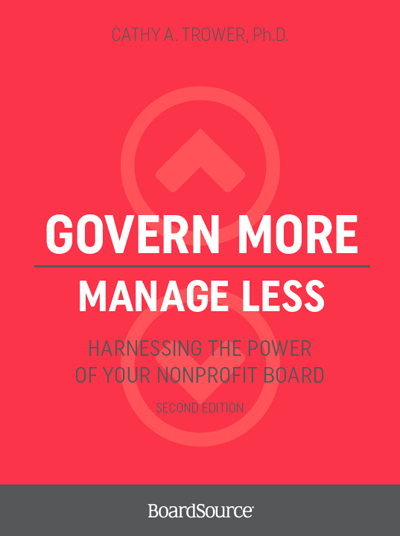Govern More, Manage Less: Harnessing the Power of Your Nonprofit Board
- Product Details
-
- Format
- PDF or Print
- Author
- Dr. Cathy Trower
- Edition
- Second
- Publication Date
- 2010
- Number of Pages
- 41
- Level
- 201
$35.00
Overview
Boards should Govern More, Manage Less. As many nonprofit board members and chief executives know, this is more easily said than done, is simpler in theory than in practice. Though nonprofit leaders may agree in principle, they often have differences of opinion about the appropriate spheres of influence and responsibilities of boards and executives.
That’s because effective governance is a balancing act between procedural accountability (assurance that an organization is in compliance with legal and regulatory provisions) and performance accountability (how an organization is achieving its mission).
In Govern More, Manage Less, we suggest actions that will help your board balance its responsibilities and understand how to practice macrogovernance and avoid micromanagement, despite increasing demands for procedural accountability. We provide guidance on how to shift the board’s central focus from management to governance, from compliance to performance.
This must-have resource addresses when and how your board should engage and on what issues. You’ll learn
- the roles of the board and chief executive in governing and managing
- what micromanagement is, why it happens, and what can be done about it
- what events are catalysts for the board overstepping its role and micromanaging
- the advantages of being a board that governs rather than manages
- the six characteristics of effective boards
The book is designed for chief executives and board members interested in raising the board’s sights and strategic value to the organization.
